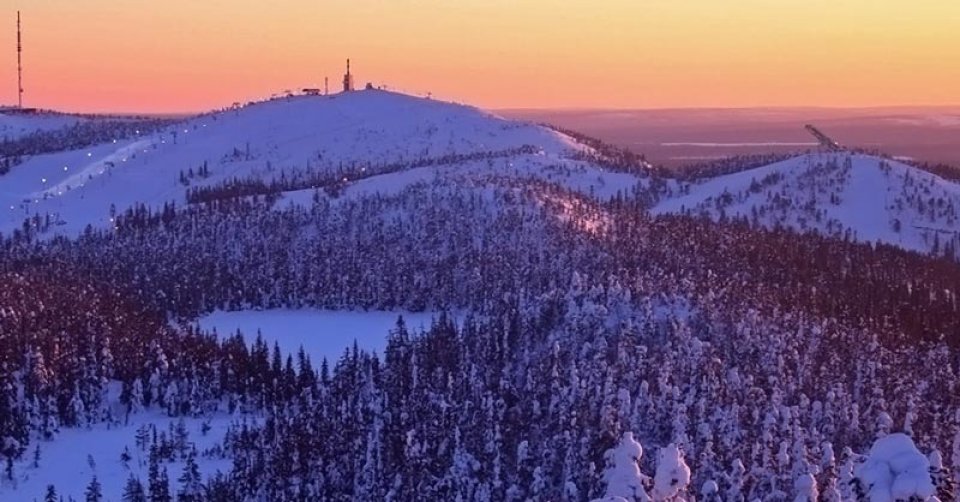
Ruka-Kuusamo is a forested area of semi-natural indigenous species. It is one of the major nature-based tourism areas in Finland visited by about one million people per year. More than 80% of the area is privately owned by small, non-industrial owners, whose income depends on timber sales. There is a local/national demand for the recreational services provided by forest owners, but no sustainable funding exists to compensate them for the opportunity costs of delaying or avoiding clear cutting of specific sites to enhance recreational and amenity values.
The Ruka-Kuusamo area is characterised by a low population density with a high share of the population being dependent on forest ecosystem services (FES), especially in the tourism sector.
This case study from the SINCERE project had the goal to:
- Introduce a payment for ecosystem services (PES) system in which forest owners are compensated for voluntarily enhancing the provision of landscape and recreational values in their forests.
- The innovative mechanism (IM) consists of a planning process to select valuable forest areas in terms of biodiversity, landscape and carbon stock and a pilot project to collect and distribute funds to implement forest management changes to support the provision of ecosystem services (ES) in these areas.
This case study concerns a payment for ecosystem services where private forest owners are compensated for ‘production’ of landscape services, such as landscape amenities and biodiversity protection. The payment is intended to come from recreational users and others through voluntary donations.
The payment for ecosystem services (PES) scheme is introduced to encourage the primary groups who benefit from recreational use of Ruka-Kuusamo to contribute voluntarily to landscape preservation, which has spill over effects on biodiversity and carbon storage. The collected funds are used for compensating forest owners who have mature forest stands for the opportunity cost related to avoiding clear felling and subsequent heavy soil preparation or for conversion to continuous cover forestry.
An awareness campaign was set up with an estimated outreach to about 1.5 million people who, through social media, became aware about the innovative mechanism (IM) and possibly increased their understanding of the forest ecosystem services (FES) provided by the area.
The IM also enhanced a dialogue between forest users and owners through participation in meetings which provided a scientific philosophical basis for dialogues on nature and environment-related issues.
About 1,000€ were collected within the project lifespan, resulting in conservation of landscape amenities on about three hectares of forest land.
The indirect benefits of forest ecosystem services (FES) are enhanced recreation services with a spill over to services such as biodiversity and carbon storage.
As the population in the area is highly dependent on tourism, the innovative mechanism (IM) might have long term impacts on local employment and income generation if it continues to collect funds and increase in scale. The conservation actions will probably lead to a small decrease in local supply of roundwood, but the impact on local sawmills will likely be insignificant, if any.
National geographical upscaling: Forests cover more than 80% of the land in Finland and thus present the typical environment for outdoor recreation and tourism activities. About 60% of all forests are privately owned and a national upscaling of the innovative mechanism (IM), where new ways and mechanisms to enhance production of landscape and recreation values are introduced, seems relevant and desirable. The present IM offers valuable lessons for integrating tourism and commercial forestry needs. However, the limited fundraising success also highlights the inherent weakness in the voluntary donation instrument.
Upscaling to other schemes: Given the format of the case study, it is not obvious that there are other related existing regulation and instruments in place that may adopt aspects of this IM.
Upscaling in scope: In theory, voluntary payments could be upscaled to any forest ecosystem services (FES). Similar approaches could be used for FES for public goods, like biodiversity conservation and carbon sequestration. However, the link between donations and provision might be hard to document and might cause disincentives when not related to services holding direct or indirect use values. Yet, there are numerous initiatives trying to source funding through related mechanisms in several EU member countries.
Upscaling to other countries: To succeed there is a need for top-level administration and strategic policy support to make voluntary payments a viable instrument. For upscaling within the EU, EU support or national legislation is required, as well as credible and reliable organisations considered fit to run this kind of FES scheme. It may also be helpful to allow donations to be deductible from personal income tax, which enhances incentives and potentials for income generated through FES schemes.
